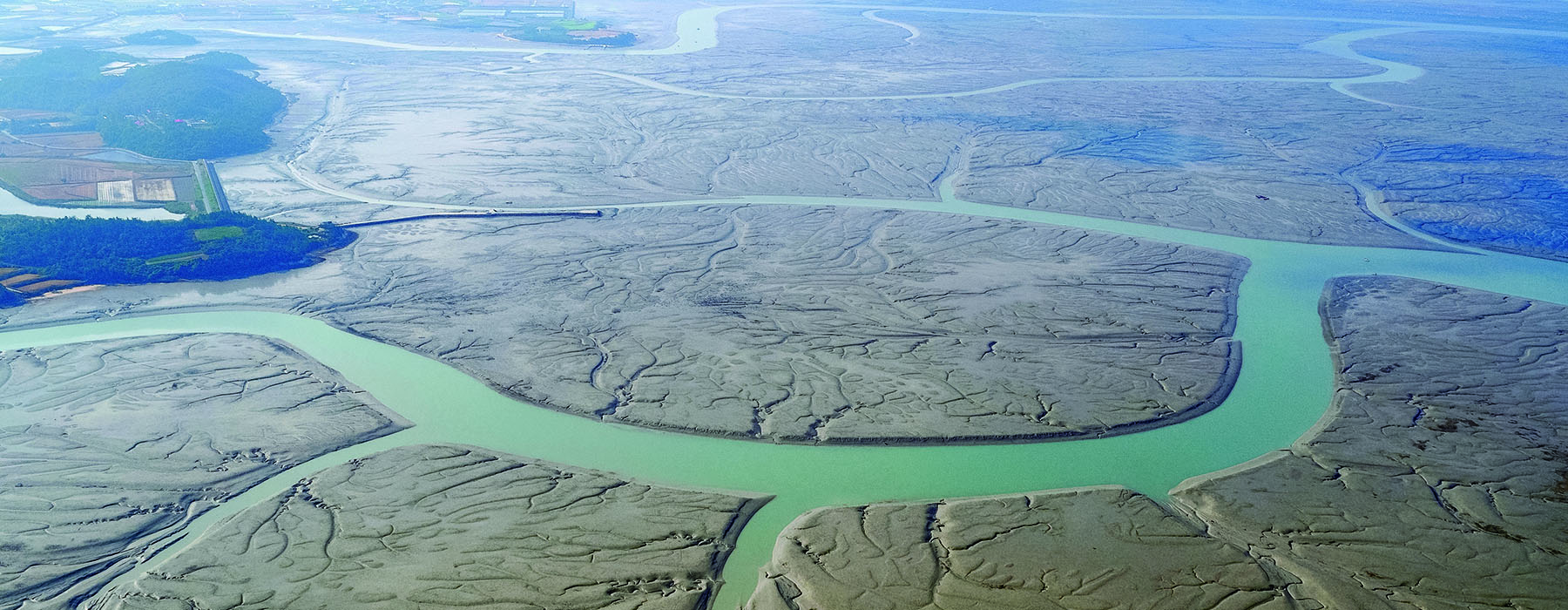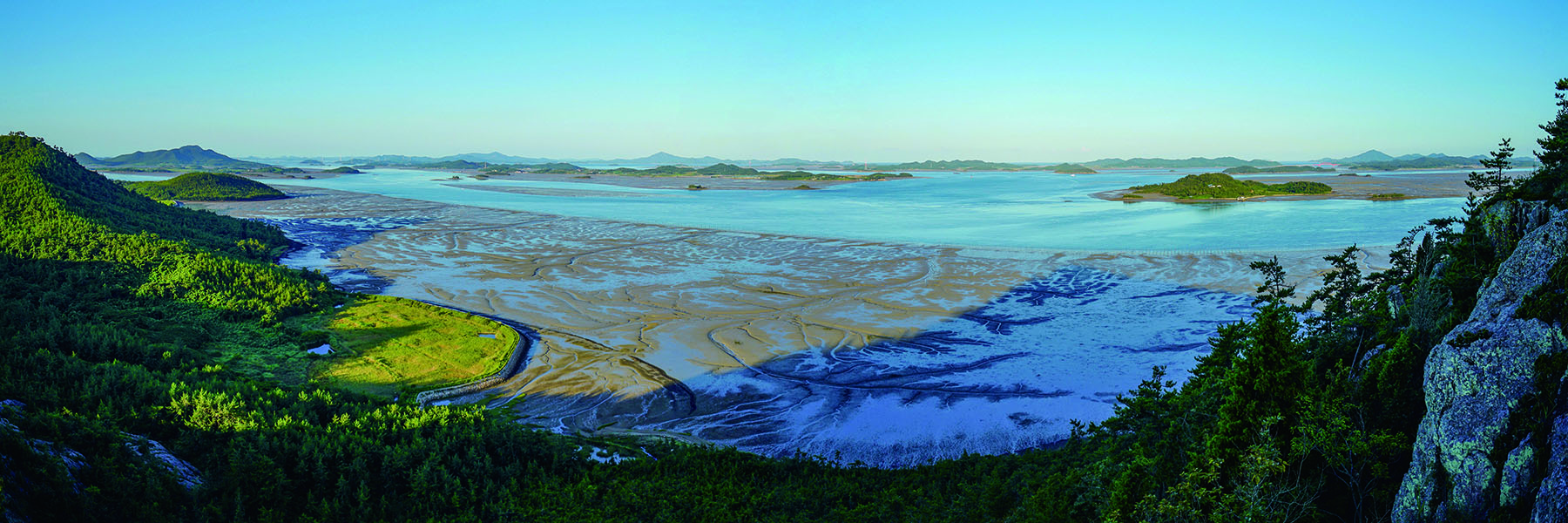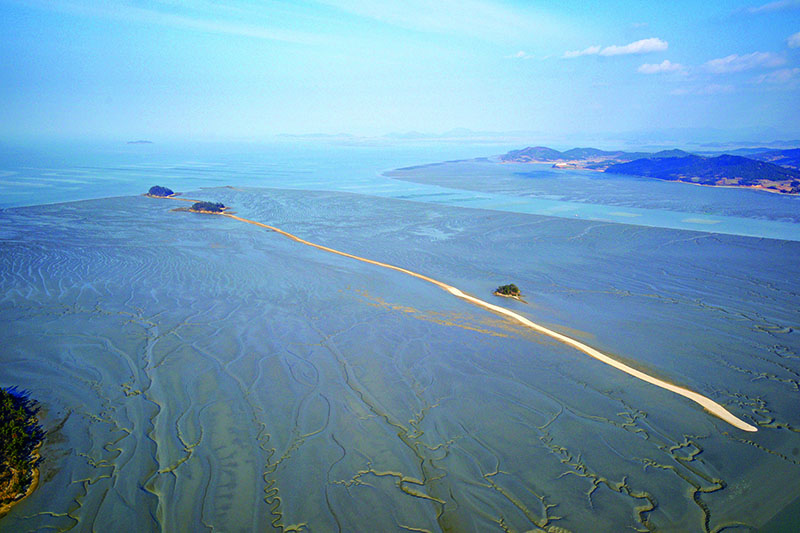한국의 갯벌Introduction

- Wide Tidal Flat created by archipelagic islands
-
Shinan Getbol is the largest site in the Republic of Korea due to the fact that the island situated near the coast has influenced the formation of the tidal flat, and has hosted the world’s highest level of seaweed and diverse macrobenthos.
Due to the unique characteristics of the archipelago, Shinan Getbol is formed to wide mud flat areas due to the weakened waves and active sedimentation, creating tidal flats with sediment layers of over 25 meters deep. Other than Shinan Getbol’s wide mud flat, it has the most various habitats among serial components, encompassing muddy, mixed, sandy, beach, sand dune, sand spit, and gravel beaches. Many uninhabited islands provide undamaged breeding grounds and habitats for migratory birds.

Shinan Getbol has the largest size among the components, and forms an ecosystem home to around 144 species of marine algae, 568 species of macrobenthos, and 170,000 waterbirds of around 95 species. It is continuously observed to 17 species on the IUCN Red List, including Far Eastern Curlew, Great Knot, Common Pochard, Common Pochard, Chinese Egret, and Saunder’s Gull.

In the Shinan Getbol, the sand-gravel string that are unique tidal flat sediments have never been reported anywhere in the world. The sediments mainly composed of coarse sand, gravel and shells, are formed independently on the mud flats. Unlike the general Chenier, it is formed perpendicular to the coastline.
